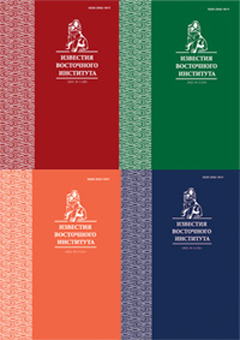Типология дополнительного элемента в китайском языке: история и современность
DOI:
https://doi.org/10.24866/2542-1611/2023-1/115-130Ключевые слова:
грамматика китайского языка, синтаксис китайского языка, члены предложения, дополнительный элемент, комплемент, типы дополнительных элементовАннотация
Статья посвящена описанию подходов к классификации дополнительного элемента (补语 bǔyǔ) – особого члена предложения, выделяемого в китайской лингвистике. На материале грамматических описаний языка прослеживается эволюция взглядов китайских лингвистов, выявляются причины столь серьезных расхождений в типах дополнительного элемента, наблюдающихся в лингводидактической и теоретической литературе по китайскому языку. Показано, что смешение формальных и семантических критериев при выделении типов приводит к размыванию границ не только в рамках этого члена предложения, но и в соотношении с дополнением и обстоятельством.





